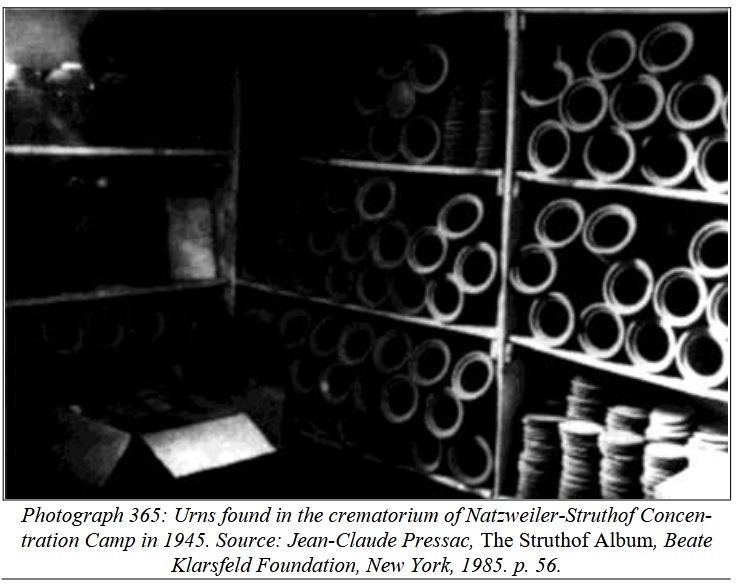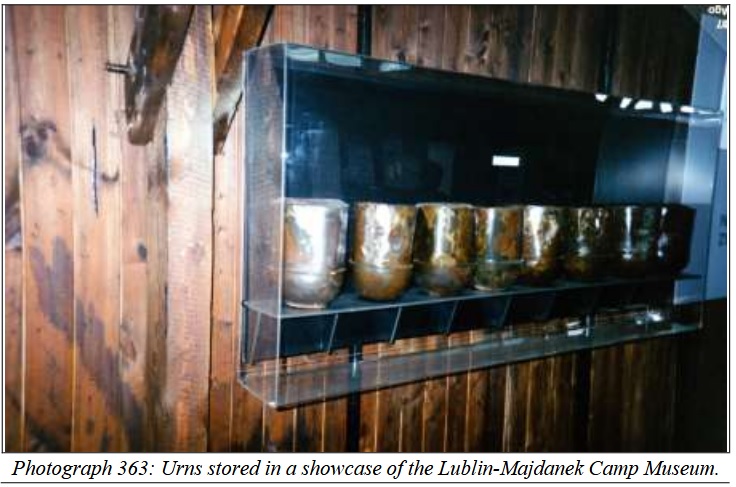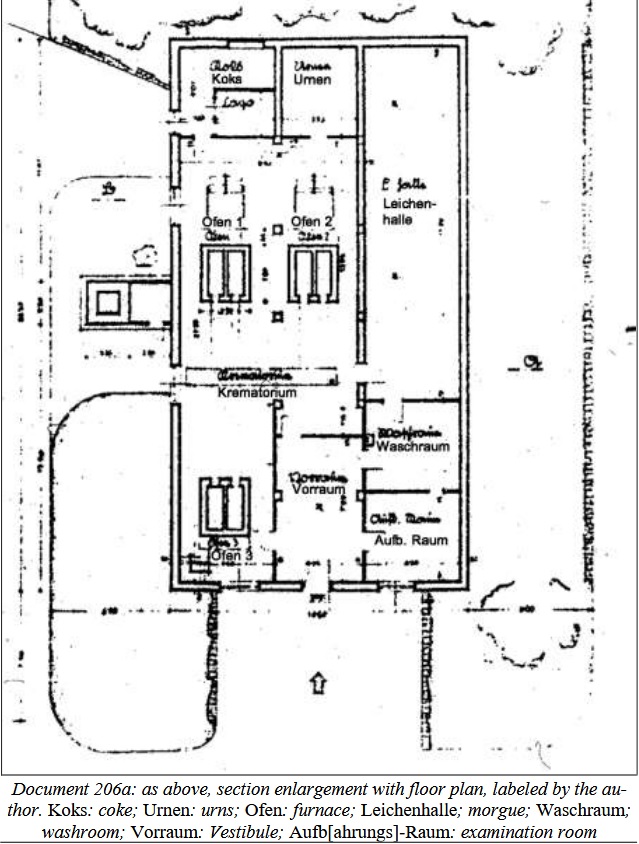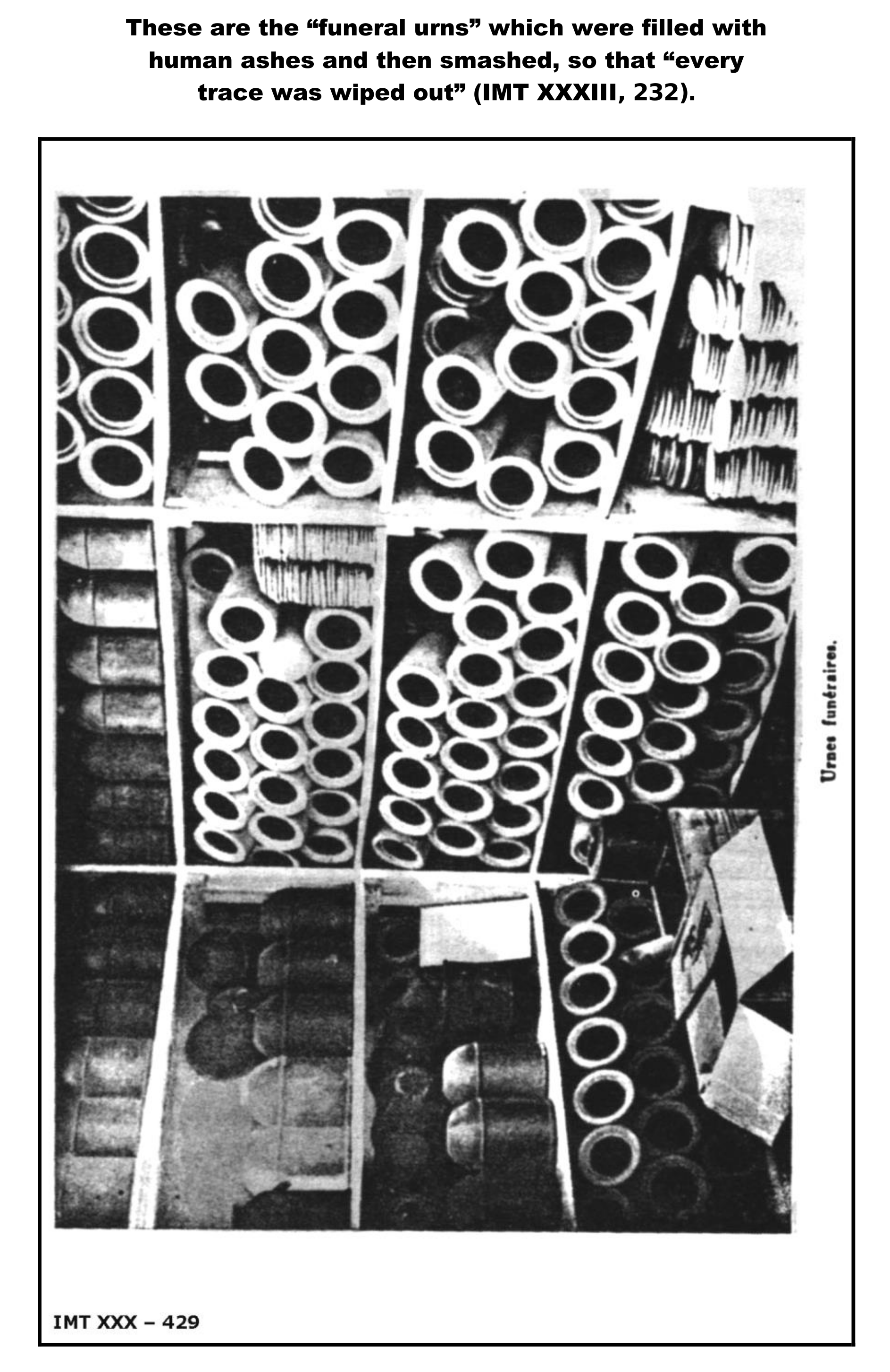Mattogno's The Cremation Furnaces of Auschwitz includes much relevant discussion, and some interesting photos:

- urnsnatz.jpg (107.09 KiB) Viewed 119 times

- stdmajdk.jpg (106.22 KiB) Viewed 119 times
Here's an AI assisted review of some key points from the book's Part 1-II, Section 12 (p. 409), demonstrating evidence of urn use and crematory regulations
extending into 1942 and beyond:
1. Initial reliance on civilian crematoria: Camps initially used external civilian facilities for cremations, only building internal ones later due to unexpected mortality increases. Quote: "When the first concentration camps were set up in Germany, the SS did not even have the slightest notion of the high level of mortality... Initially they simply let nearby civilian crematoria take care of these matters..." (p. 410; e.g., Buchenwald to Weimar, NO-4353).
2. Strict compliance with civilian cremation laws: Camp crematoria followed 1930s civilian regulations, including Himmler's 1940 decree mirroring 1935 operating rules, extended across Greater Germany until war's end. Quote: "When the first crematoria began to be set up in concentration camps later on, they were subject to strict regulations, perfectly complying with current legislation applying to civilian crematoria... such regulations remained in force up to the end of the war." (pp. 410-411; Himmler's decree, BAK NS 3/425).
3. Cremation laws and 24-hour rule enforced into 1944: Official forms referenced the 1934 cremation law, mandating cremation within 24 hours; this applied at Auschwitz and Stutthof up to December 1944. Quote: "The official form concerning the transfer of the body... refers to the ‘Law on cremations’ of 15 May 1934... ‘the cremation of the corpse must be carried out within 24 hours.’ At Stutthof Camp, this practice has been confirmed up to December of 1944." (p. 415; Documents 292-293, Blumental 1946 Vol. I pp. 106f.).
4. Laws still in force in 1942, with extensions: 1934/1935/1938 cremation laws remained active in the Reich as of October 1942 (per patent application) and were extended to Sudetenland in March 1942. Quote: "Fritz Sander’s patent application of 26 October 1942 tells us that the ‘Law on cremations’ of 15 May 1934... were still in force in the Reich at that moment. On 13 March 1942, these laws were extended to the Reichsgau Sudetenland." (p. 415; Roland 1942 p. 62).
5. Mandate for single-corpse cremations and ash segregation: One body per muffle, with detailed registers ensuring identifiable ashes; no mass incineration implied. Quote: "In one incineration chamber only one corpse may be incinerated at one time... The ashes of each corpse must be collected in a separate ash container." (pp. 411-412; Himmler's decree Section IV.4.5-6).
6. Standardized DIN-compliant urns for ashes: Urns met civilian standards (DIN 3198) with metal tags for identification, used in camps like Gross-Rosen and Auschwitz into 1941. Quote: "The containers are to be in conformity with DIN Standard 3198 ‘Ash Capsules for Urns’... For the immediate needs of the crematorium, Topf offered the supply of 500 ash urns DIN standard..." (pp. 413, 416; Himmler's decree Section IV.5.2; Gross-Rosen requests, 24 June/11 July 1941).
7. Detailed cremation registers tracking urn shipments: Registers recorded personal details, death cause, and urn destination cemetery; free shipments to locals ensured orderly handling. Quote: "The head of the crematorium had to keep a register... [including] the cemetery to which the urn was sent for burial... ‘The corpse will be cremated... The urn will be shipped free of charge.’” (p. 415; AMS I-VD-1, Document 295).
8. Urn shipments documented into 1942: Actual urn shipments occurred at Mauthausen until at least March 1942; policy continued in Auschwitz until at least November 1941, with cases/boxes produced for this purpose. Quote: "Shipment of urns is also documented for the Mauthausen Camp, at least until March of 1942... For Auschwitz, the use of urns is documented until November of 1941... The latest known request, dated 27 November 1941, refers to 50 ‘urn-shipment boxes.’” (p. 415-416; Documents 296, 299-300).
9. Enforcement of 1940 decree in 1942, preserving relative viewing: A 1942 circular upheld Himmler's decree, denying requests to prohibit corpse viewing for hygiene reasons—indicating individualized processes persisted. Quote: "On 17 October 1942, SS Obersturmbannführer Liebehenschel... stated with reference to Himmler’s above-mentioned decree: ‘Several camp commandants have requested to prohibit viewing... a change in the RFSS decree is not possible at the moment.’” (p. 415; NO-1510).
10. Furnace design for coffined, respectful cremations: Topf furnaces included coffin carts and blower timing optimized for single, coffined bodies per civilian norms, not mass disposal. Quote: "in the cost estimates for the double- and triple-muffle furnaces, carts or devices for the introduction of coffins into the muffle were specifically mentioned... This practice is completely consistent with corpses introduced into the muffle in coffins." (p. 417; Operating instructions, Documents 210 & 227).
Here is a drawing showing an "urn room" in use at Auschwitz (main camp?) crematoria as of April 1942, located top-center (adjacent to morgue and crematory):

- mcampurnen-4-42.jpg (156.27 KiB) Viewed 119 times
All of this reinforces that the earlier policies (e.g. per Himmler) continued, although likely with some modifications due to major volume increases with the typhus epidemic.
It is notable that, since the policies on crematory management and urn use are documented in this way and with no documentation reflecting a dramatic change in the policy, exterminationists are forced to claim that it was not only 'Jewish extermination' that was conducted haphazardly by verbal order but that the same was done with logistical and technical procedures like cremation and ash collection and handling (scattering bulk ashes into the wind, into a river, etc., rather than individualized collection). Thus, their burden of proof is yet further expanded.
Regarding the "quiet part out loud" others have noted:
Archie wrote:[Pressac] notes that the dates of death and cremation on the urns often indicate a lag of four or five days, during which time the bodies would have been in the morgues.
I am reminded of Nessie's complaints that an affirmed history of "what really happened" at the crematories and morgues of Auschwitz/Birkenau is not often described by revisionists.
Well, Nessie: there ya' go.
